How to Repair and Service Different Types of Clocks?

Did you know clocks have a long and interesting history? The earliest known methods of timekeeping were as primitive as placing an upright stick on the ground and following the shadow of the stick cast on the ground. This then evolved to more efficient methods like sundials. There were various methods of timekeeping throughout history namely shadow clocks, candle clocks, and even water clocks.
However, sundials and other such primitive methods were not reliable, and as time progressed people developed more modern methods of timekeeping. Influenced by changing times and science, the first mechanical clocks were created. The earliest mechanical clocks can be traced back to the 13th to 14th centuries when man realized that timekeeping would be easier with the aid of machines. Many inventors at various points in history contributed to creating the varied types of clocks we see now.
Clocks aren’t just known for being the mechanical marvel that tells time. They are known for the intricate machinery that powers them. Many of these clocks seem majestic and ingenious, however, they need to be serviced regularly to stay accurate and elegant. Service and repair of antique clocks should never be taken lightly. Service and repair of any clock is based on the kind of clock, its mechanism, availability of parts etc.
To understand this better, we need to venture into the world of clocks. Depending on the types of clocks, every clock is often a work of art. Clocks have evolved over time and now we have time-telling devices that can fit on our wrists. But this has in no way diminished the love and fascination we have with clocks.
Different Types of Clocks
Grandfather Clocks
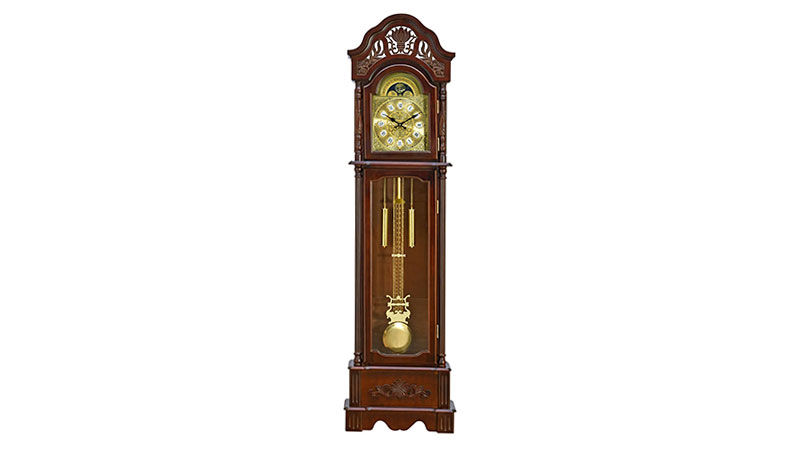
Grandfather clocks, also known as long case clocks, are some of the most recognized clocks in the world. They have a long and decorated history.
- These are well-designed and aesthetically pleasing time-telling devices.
- These clocks are free-standing and not wall mounted.
- Grandfather clocks are anywhere between 6 to 8 feet in size.
- The swinging pendulum and chimes make its presence unmissable.
- They have a tall, wooden body that encases its metal mechanism.
The pendulum and weight are crucial for the movement of a grandfather clock. It regulates and adjusts timekeeping. There are three types of grandfather clock movement, chain-driven, cable-driven, and quartz.
Different mechanisms of Grand Father Clocks:
Chain driven mechanism
Chain driven mechanism uses chains as a winding mechanism to set the weights in the right position.
- The chain-driven grandfather clock has 3 chains, one for each weight and they all serve different purposes.
- The weight on the right regulates chime melody, the weight in the middle powers the pendulum, and the weight on the left works on the hour striking and counting mechanism.
- This type of grandfather clock requires manual winding once a week.
Cable-driven mechanism
Cable-driven mechanism also works on weights that are suspended by cables; these cables are used to return the clock’s weights to the top position.
- There are 3 weights in this movement that have different functions.
- The weight on the right is to works on the chime melody, the weight in the middle regulates the pendulum, and the weight on the left powers the clock striking mechanism.
- These weights need to be adjusted every week for the clock to function well.
Quartz
Unlike the chain-driven and cable driven, the quartz-powered grandfather clocks are modern.
- Grandfather clocks that have quartz or battery-operated movement made their first appearance in the late 1920s.
- Quartz crystals are used to produce an electronic oscillator that powers the pendulum of a grandfather clock.
- The battery needs to be replaced if the clock chimes stocks or weakens or the pendulum stops working.
Owing to their history, size, design, and the work that goes into creating these clocks, they are not just highly sought-after antique clocks but also highly priced.
Bracket Clocks
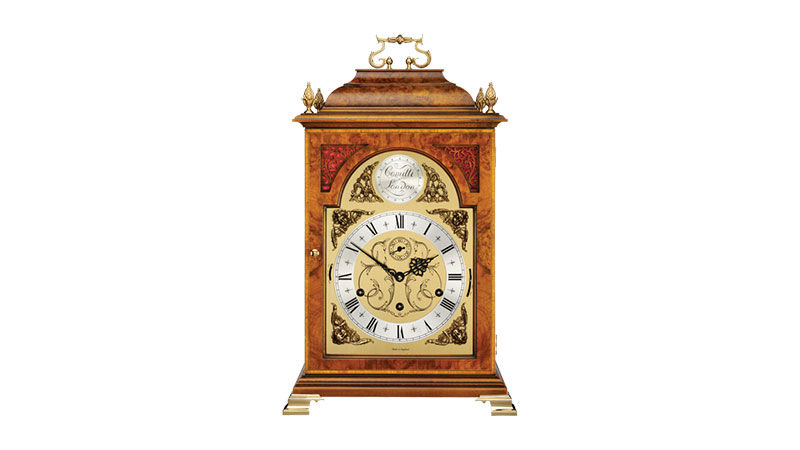
Bracket clocks made their appearance in the latter half of 1600. These clocks have decorative matching brackets that mount them to the wall. Despite the brackets, they weren’t always mounted on the wall, they could also be placed on tables or flat surfaces. These clocks are smaller, which makes them more portable.
- Bracket clocks are often made of two pieces created as an ensemble, namely the clock and a decorative shelf.
- These clocks also had handles which were required to carry them. These are spring-driven pendulum clocks.
- The springs used in bracket clocks provide power to the clock to work.
- In most cases, these were repeaters, clocks that could be made to strike the hours at the pull of a handle or cord.
- These clocks were prized for their design and portability.
Evolution of Bracket Clocks:
Contemporary fashion had a great impact on the design of bracket clocks. Between 1670 and 1690, these clocks were featured predominantly with square dial clocks in ebonized pedimented cases, these were followed by basket top clocks.
As the century progressed, the arch dial, inverted bell circa 1720, and true bell tops appeared. Later on, styles like the break-arch case, the balloon clock, the lancet top, the arch top, and eventually, the chamfered top too made their appearance.
Carriage Clocks
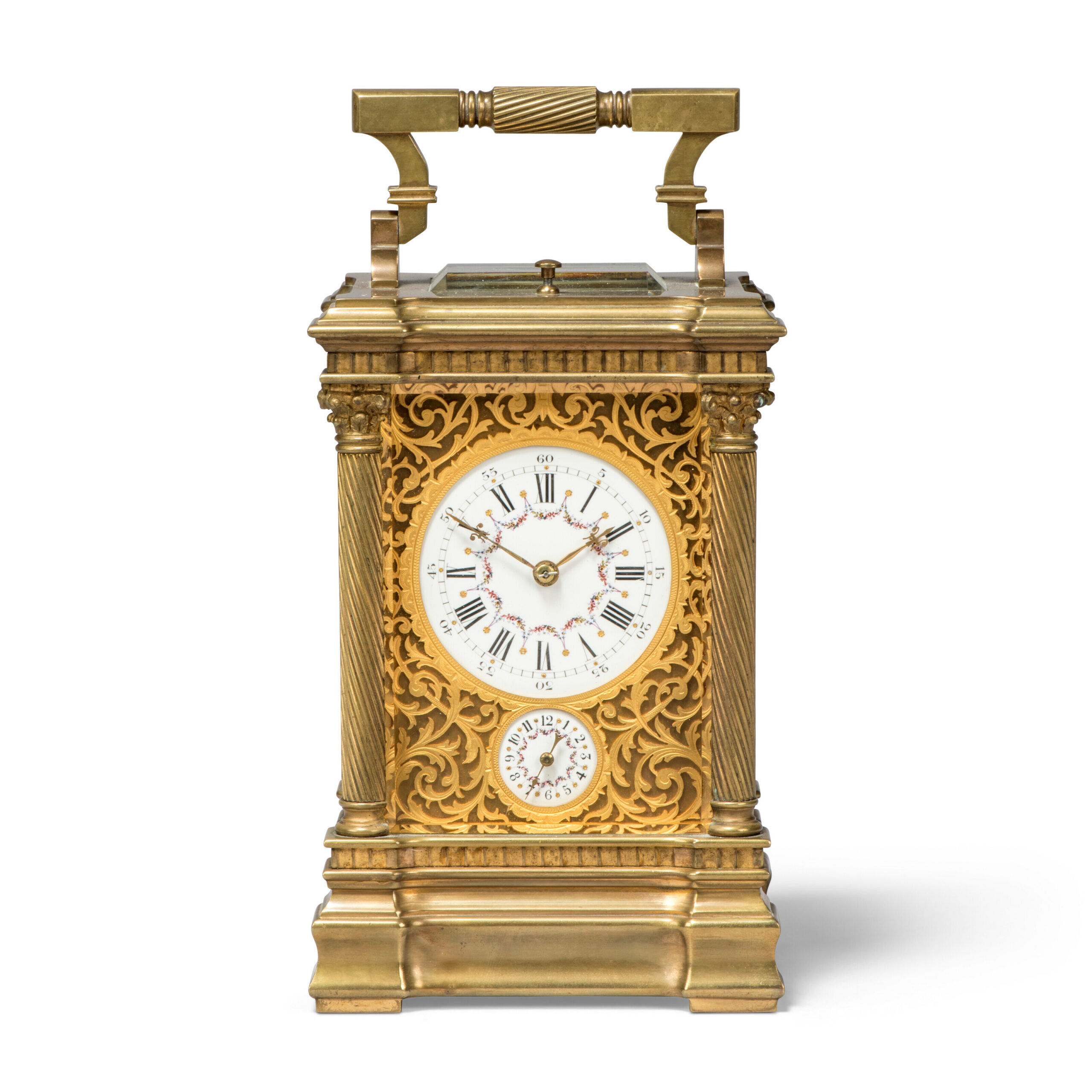
Carriage clocks are small clocks developed in 19th century in France. Carriage clocks were created to fulfil the needs of a time keeping device that could be carried around. Invented by Abraham-Louis Breguet in 1812, for emperor Napoleon Bonaparte in 1812, these clocks were a combination of elegance and ingenuity.
- The case is usually a rectangle with a handle used for carrying the clock around.
- The case is usually made of metal, and the antique carriage clocks have exquisite patterns.
- Carriage clocks also have chimes to mark hours.
- In carriage clocks, the platform escapement can sometimes be seen through a glazed aperture at the top.
- For timekeeping, carriage clocks use a balance and balance spring.
A carriage clock used to be a handsome gift to a long-term employee, however in modern era this practice is no longer followed. Modern carriage clocks are far more plain compared to their antique counterpart in designs.
Mantel Clocks
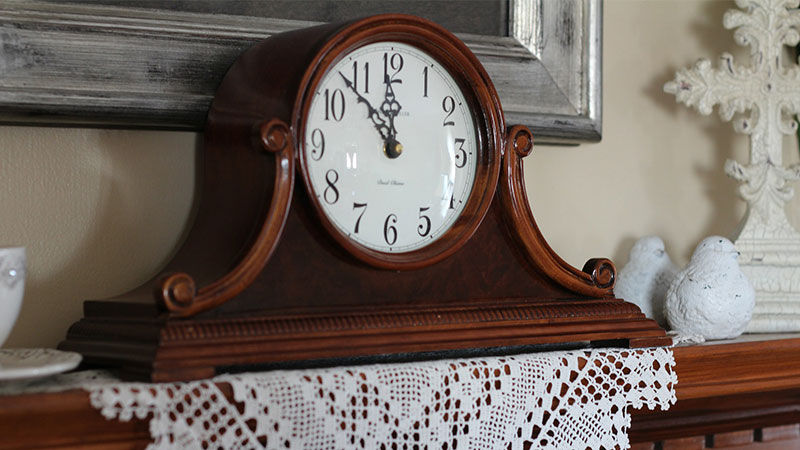
Mantel clocks or shelf clocks are small house clocks. These clocks have been around since the late 1700s. These clocks are usually placed on shelves, on top of fireplaces or mantels, thus earning them the name.
- Mantel clocks are small, portable, and available in a variety of shapes and designs.
- They are often ornate and quite attractive, making them a great addition to the interior décor of the house.
- Mantel clocks have two types of movement namely mechanical and quartz.
Types of Mantel Clocks:
Mechanical
- In antique mantel clocks, the movement is always wound manually with a key.
- These are ‘8-day’ movements that need to be wound once a week to tighten the spring.
- Winding a clock involves inserting a key into a hole on the face; some clocks may have two or three holes.
- In case the second hole exists, it powers the strikes to sound every hour and half hour.
- The third hole is for powering the chimes that play a melody hourly.
Quartz
- Mantel clocks with quartz movement are battery-operated clocks.
- They have better accuracy at timekeeping compared to mechanical movement.
- They have nearly no maintenance need apart from an occasional change of battery.
- A mantel clock is one of the few creatively made clocks.
- Mantel clock’s construction material can include an array of materials like wood, metal, porcelain, stone, plastic, etc.
Skeleton Clocks
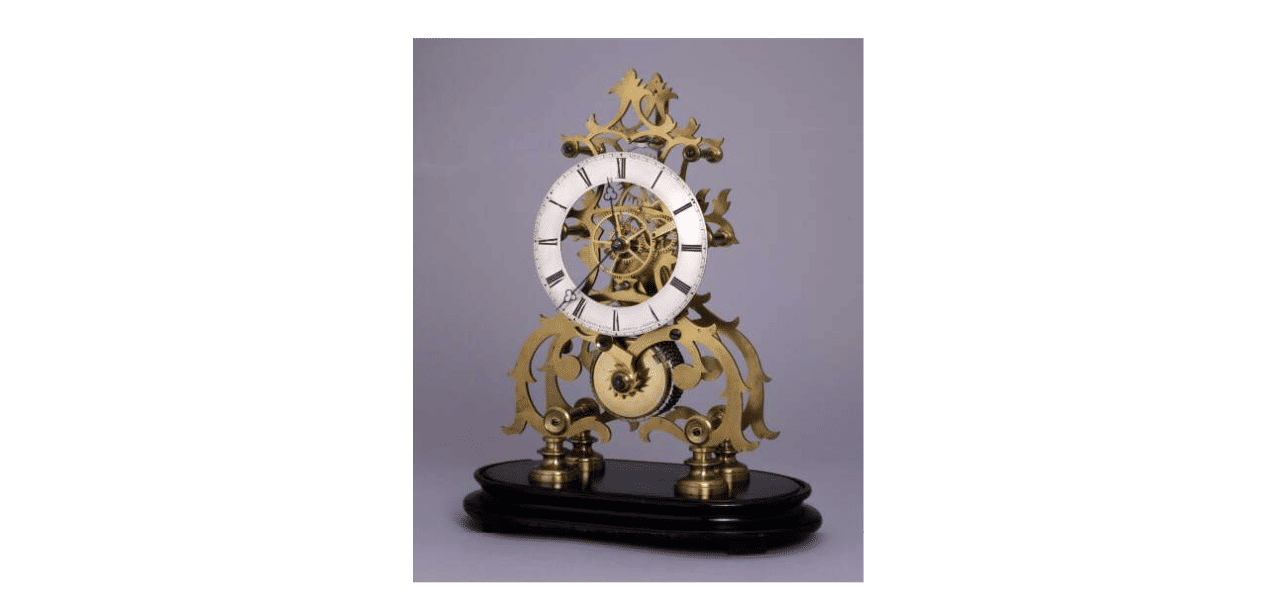
Skeleton clocks have earned their name owing to their exposed mechanism. There is no official definition of a skeleton clock, however, it is understood that main parts of the timepiece should be openly visible. This implies that the front of the clock and most of the back should be visible for it to be considered and accepted as a skeleton clock. These antique clocks have a special appeal due to their design that intentionally displays their inner working. The various gears, wheels, springs, etc can be viewed.
- The parts that are usually displayed by a skeleton clock design are those that are either quite attractive or showcase the movement intricately.
- These may consist of the escapement, balance wheel and balance spring, mainspring, and tourbillon.
- The elements in a skeleton clock may differ depending upon where they are created.
- British skeleton clocks have anchor, dead beat, balance wheel and tic tac escapements.
- On the other hand, while French skeleton clocks make use of pinwheel, coup perdu and cross beat escapements.
Skeleton clocks have been around since the late 17th and early 18th centuries. Skeleton clocks weren’t just marvelous to view but also challenging to craft. These clocks have been prized for their ingenuity and art.
Cuckoo Clocks
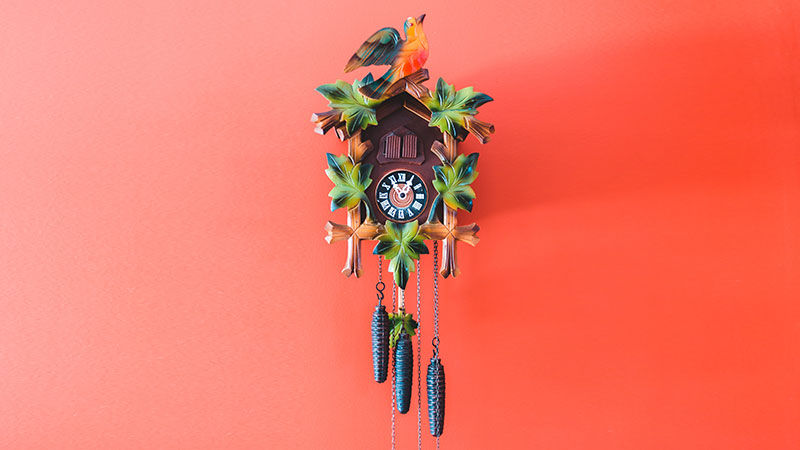
Cuckoo clocks are probably one of the most famous wall clocks. These clocks are one of the most entertaining ways to keep time. It’s unclear who invented cuckoo clocks; however, their origins can be traced back to the early 1600s in southwestern Germany, in an area called the Black Forest.
- Cuckoo clocks have earned the moniker for their distinctive calls.
- Unlike other clocks that have chimes, when a cuckoo clock strikes the hour, it produces a sound that is quite like the call of a common cuckoo.
- The clocks also have an automated cuckoo bird that pops out of a tiny door in the clock, with the call notes.
- Depending upon the clock the bird may move its wings or lean forwards.
- Cuckoo clocks come with mechanical and quartz movement.
Types of Movements in Cuckoo Clocks:
1-day movement & 8-day movement Mechanical
Cuckoo clocks with mechanical movements are supposed to be wound up. The 1-day movements need winding every day and the 8-day movements need to be winded every week. The winding in a cuckoo clock happens by pulling the chain down. This is why cuckoo clocks are hung from a height, otherwise, the weights can’t pull downwards well and the movement would not be wound up entirely.
Quartz-movement
Cuckoo clocks with Quartz movement run on a battery. These batteries can run for quite a long time.
Types of cuckoo clocks:
Traditional or carved
These clocks have carvings that depict nature or hunting scenes. Usually, it’s horned animals like stags or birds. It also has leaves and branches carved into its body.
Chalet style
These clocks look like small black forest chalets. These clocks are based on the everyday life of the world around the black forest surrounding them. It has everything from miniature people to courtyards, wells, benches, trees, animals, etc.
Shield clock
Shield clocks look plain compared to other cuckoo clocks. They are painted wooden shields and the work is quite intricate. The painting usually consists of flower motifs.
Bahnhäusle-style clock
These clocks look like little houses covered in grapevines. They are covered in carvings that are beautiful and ornate.
Modern clocks
Modern clocks are sleek and very different from traditional cuckoo clocks. While most of them still have cuckoos popping out, they are understated and minimalistic.
Westminster Chime Clocks
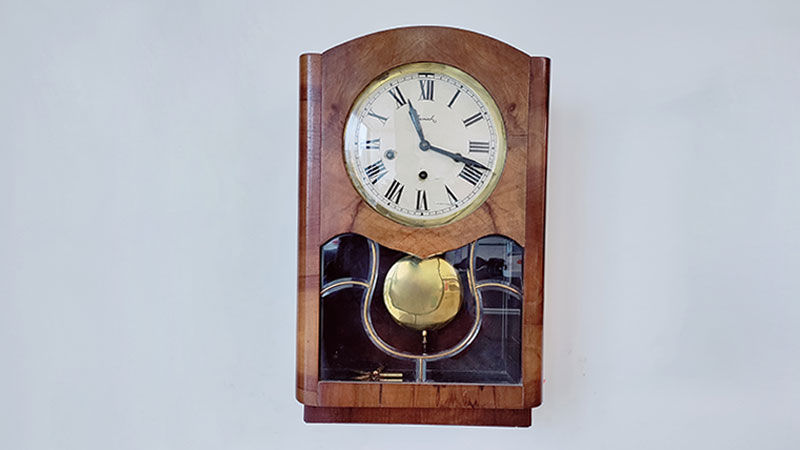
Westminster chime can be defined as ‘clock chimes on four bells or gongs fashioned after the tune of the chimes on the House of Parliament clock in London’. Westminster chiming clocks play the Westminster melody on the hour and count out the hours. It was originally installed at the Palace of Westminster in London, now known as the Elizabeth Tower.
Both mechanical and quartz movement-powered clocks can have Westminster chimes. Most chiming clocks have westminster chime as their melody. This may include grandfather clocks, mantel clocks, wall clocks, etc. This is one of the most recognizable notes on a clock.
Wall Clocks
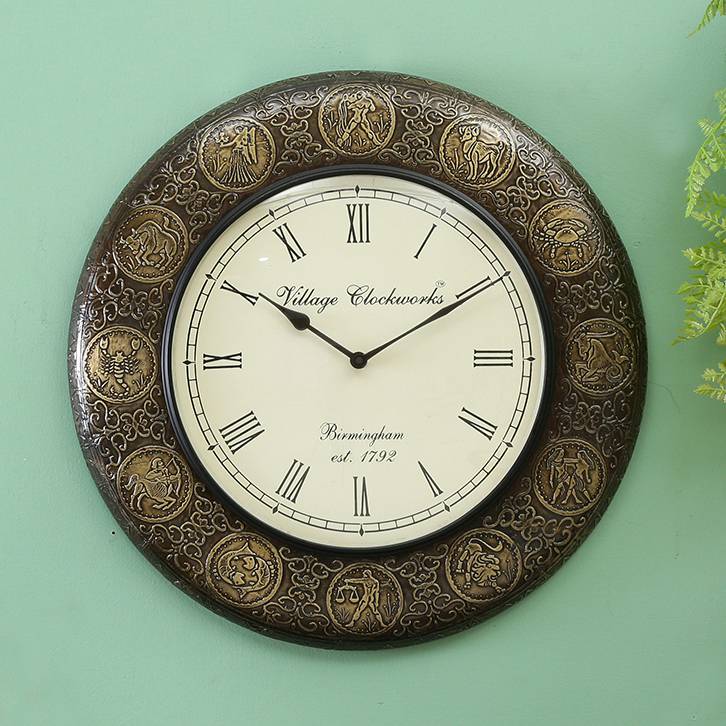
Wall clocks are one of the most common clocks and are found all over the world in nearly all households. As the name suggests, wall clocks are mounted on the walls.
- Wall clocks have been around since the 18th and 19th centuries.
- Wall clocks are available in innumerable types, styles, and designs.
- From antique wall clocks with their ornate pattern, and pendulums or modern sleek wall clocks with funky designs, the variety of wall clocks is amazing.
Service and Repair of Clocks
Most of these clocks are either antiques or need special care to keep functioning well. Many of the above-listed clocks aren’t just intriguing, they are also priceless. Regular servicing helps you identify defects, replace parts or change parts before clocks can be damaged. Antique clocks need to be serviced every few months to ensure their health. Most clocks that have mechanical movement need to be regularly examined to keep it working.
Expert Care
‘One size fits all’ doesn’t work with clock repair. As you may have noticed, there is a wide variety of clocks, certain clocks need special care and attention. Your local watch repair shop is not equipped to deal with something like an antique grandfather clock! What your clocks need and deserve is expert care from seasoned and trained experts. types of clocks
Trusted Service Center for Clocks - My Watch Merchant
If you have a clock that needs to be serviced or repaired, connect with us at My Watch Merchant. For over 70 years we have perfected the art and science of clock repair and service.
We are well versed in the art and science of clock repair. We have experts who specialize in handling antique clocks. We use only the best techniques and the most advanced machinery to handle any clock entrusted to us.
An antique clock or a clock with history could be your pride and joy, let us help you keep it chiming.


